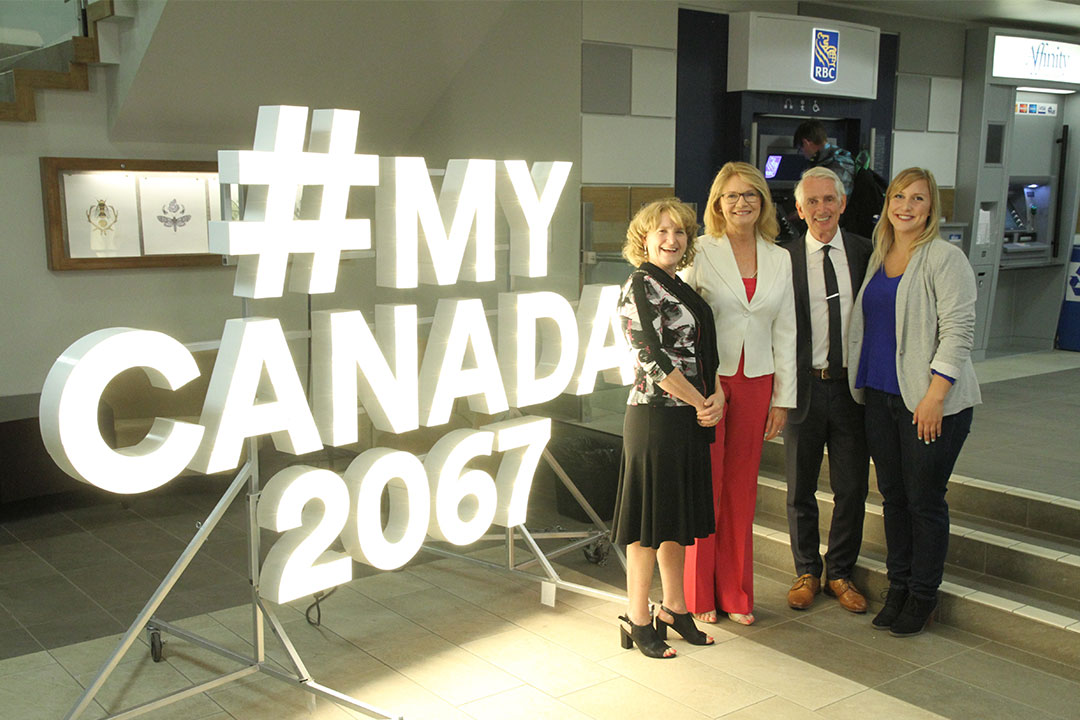
U of S researchers awarded $10.7M by NSERC
SASKATOON – Sixty University of Saskatchewan (U of S) faculty and 27 graduate students and post-doctoral fellows have been awarded a total of $10.7 million by the federal Natural Sciences and Engineering Research Council (NSERC) for fundamental research that will contribute to more prosperous future for Canada.
The announcement was made today at the U of S by Kate Young, Parliamentary Secretary to Science Minister Kirsty Duncan.
“This major investment advances research in fundamental, high-quality science that is vital to building Canada’s economic future and training the next generation of leaders,” said Karen Chad, U of S vice-president research.
Mechanical engineer Carey Simonson has been awarded a total of $423,465 for NSERC Discovery and research tools and instruments grants to study how to improve energy efficiency of heat exchangers used in systems that heat, ventilate and air condition buildings. He notes the heating and cooling of buildings accounts for 30-50 per cent of energy consumption and greenhouse gas emissions in developed countries. A 2014 report by the Intergovernmental Panel on Climate Change suggests the global demand for cooling is expected to increase 30-fold in this century, due to climate change and increasing demand from developing countries.
“This investment will help train many graduate students, and could lead to ground-breaking advancements in the field of heating, ventilating, air conditioning and refrigeration technology,” said Simonson. “Our research may lead to new technologies that address economic and environmental needs by reducing energy consumption, costs and environmental impacts of heating and cooling buildings.”
NSERC awards cover research as diverse as exploring the effectiveness of using beavers to restore aquatic ecosystems to using agricultural byproducts and forestry residues as feedstock to produce bioenergy. Some other examples of innovative U of S research projects:
- $300,000 to veterinary microbiologist Janet Hill for research on the trillions of micro-organisms that inhabit every surface of humans and animals, and play a critical role in the health of their hosts.
“Our research team is applying conventional and molecular microbiology techniques to detecting and monitoring these microbial communities,” said Hill. “Our discoveries will contribute to a general understanding of how and why microbiomes change and how we might learn to manipulate those processes to improve human, animal and environmental health, and to advance biotechnology.” - $225,000 to chemist Tim Kelly for research on new material, processes and cell designs for emerging solar technology.
“We are currently studying a new type of solar technology, called the perovskite solar cell,” said Kelly. “These devices are efficient and easy to manufacture, but don’t last long. We are looking to identify how these solar cells degrade, and then develop ways of making them more stable. If we are successful, the technology would be a viable alternative to conventional crystalline silicon technology that’s now in common use.” - $105,000 to physicist Chary Rangacharyulu for research on developing isotopes that enable new ways of doing medical imaging with positron-emission tomography (PET) and single-photo emission computed tomography (SPECT).
“We are working to develop a single isotope that emits positrons and gamma rays, allowing us to combine the two imaging technologies,” said Rangacharyulu. “The goal is to provide radiologists multiple high-quality images obtained in a single setting, and minimize false positives.”
The experiments on isotopes will be performed at the U of S cyclotron, Osaka University in Japan, and the TRIUMF laboratory at the University of British Columbia.
Among the 27 students awarded scholarships and fellowships is U of S toxicology PhD student Vanessa Cowan, who is working to determine the safe threshold in livestock feed of a plant fungus that infects most grasses and cereal grains in Canada. The fungus produces a toxic compound called ergot alkaloids, which can reduce sperm and milk production in cattle, and lead to the loss of hooves and the tips of tails and ears. Cowan estimates the economic impact in Canada of such toxic compounds to be in the millions of dollars.
“My research aims to protect animal health and productivity, influence regulations on livestock feed safety, and educate producers on the issue of ergot poisoning,” she said.
A full listing of grant recipients is available here: http://www.nserc-crsng.gc.ca/NSERC-CRSNG/FundingDecisions-DecisionsFinancement/index_eng.asp
-30-
For more information, contact:
Jennifer Thoma
Media Relations Specialist
University of Saskatchewan
306-966-1851
jennifer.thoma@usask.ca

